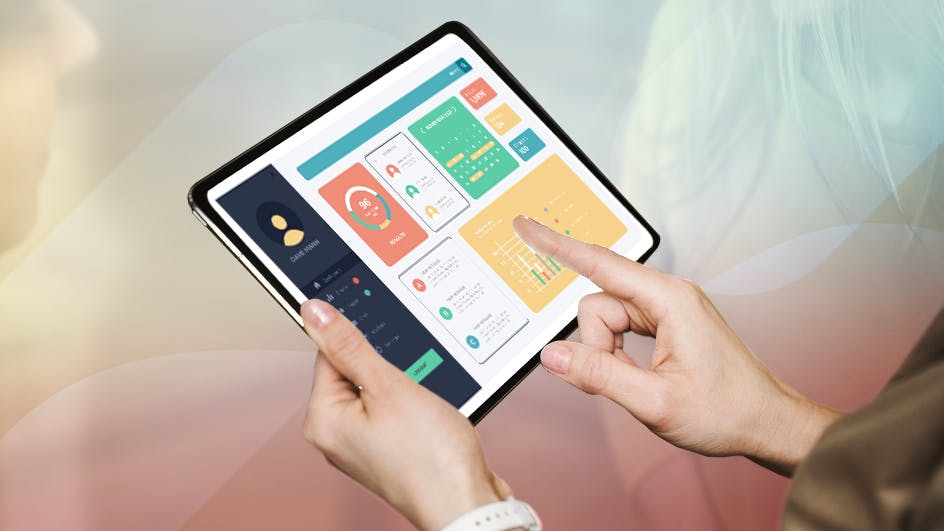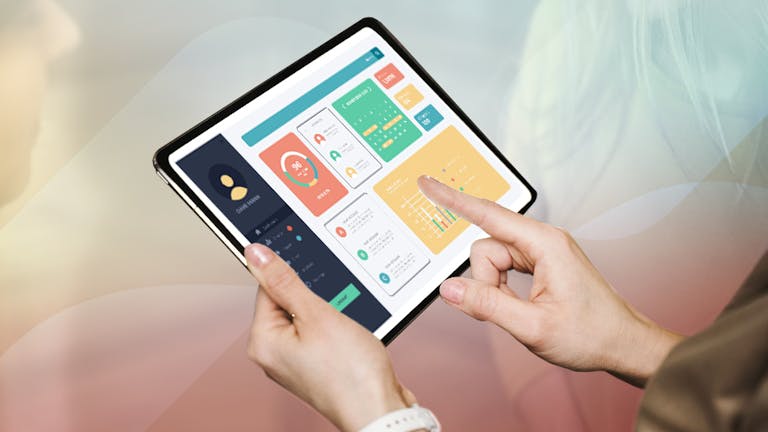Having the ability to track and manage the performance of your learning and development (L&D) strategy is critical to its success. But this can be a complex undertaking even for the most seasoned team.
When you're parsing data from different sources across all of your learning programs, things get complicated quickly. Without a centralized place to see and store it all, it can be easy to get lost in the numbers and lose sight of why you’re collecting all this data in the first place.
What data should you collect in your training dashboard?
Data allows your team to gather valuable performance insights about your learning and development strategy and inform your decision-making. At the same time, data that isn’t presented effectively can slow down processes or obscure important trends in a sea of irrelevant numbers. In many cases, more metrics don't necessarily deliver more clarity.
For best results, exercise restraint and selectivity in the data you cull and only introduce data into your training dashboard purposefully and strategically.
Next, let’s review the types of data and metrics worth looking at.
Standard L&D metrics to include in your dashboard
As a baseline, you’ll want to include the L&D metrics you’re already tracking as part of your training dashboard. This information directly demonstrates the efficacy of the initiatives you have in place and can serve as a diagnostic tool to flag potential areas of concern.
Common learning metrics can include:
- Number of employees engaging with each specific learning initiative
- Course or program completion rate
- Time-to-completion
- Employee performance following completion
The exact metrics will vary greatly depending on the type of initiative you’re measuring. For example, how you measure the effectiveness of a mentorship program is going to be very different from the metrics you use to evaluate an enterprise learning platform.
Different data points for different audiences
When managing a large database of information, it’s not so much the numbers that matter, as the stories they tell. The relevance of that data differs greatly by audience. The CFO may want to better understand the cost savings of investing in training and education, while a CHRO may want to see its effect on recruitment or retention. For truly useful analytics, you need a dashboard that can be edited to serve the needs of all relevant stakeholders.
What metrics matter for C-Suite
Company executives typically care the most about how individual teams or departments are driving toward company-wide goals. Your L&D programs should be clearly aligned with your organization’s primary business objectives, and the data you deliver to the C-suite through a dashboard needs to reflect this.
Here are some common questions that they may want answers to:
- How is your L&D strategy being used to improve employee performance company-wide?
- What is the ROI of your various L&D programs?
- What’s the impact of L&D programs on engagement and retention?
When building out your dashboard, think about how you structure and present your data through this lens.
What metrics matter for department leaders
Department leads want to understand how L&D programs are affecting their teams and on a smaller scale and likely with more details.
Here are some examples of questions your training dashboard should answer:
- How has performance changed in XYZ department after training program completion?
- Are current training and education initiatives closing skills gaps?
- How many people enrolled in an L&D program have been promoted or transferred to a new role within the organization?
- What is the engagement rate with L&D programs within XYZ department?
Understanding data sources for your training dashboard
L&D impacts every person and department across an entire organization. This means that you likely need to collect data from outside of your immediate team and coordinate with additional stakeholders to ensure you have access to this data on a regular basis. When possible, aim to automate data retrieval — this will save you a lot of time.
How often should you revisit your employee training dashboard?
Your dashboard can — and should — evolve. Once you have a first version built, take a critical look. Are your numbers answering questions that matter? Or should they be tweaked to better reflect the data you need? Can you simplify further or should you dive deeper? Remember that dashboard management is ongoing.
For best results, schedule regular dashboard reviews about once per quarter to ensure information is being adequately tracked and utilized. Changes tend to be more incremental with more frequent reviews and can make it hard to see measurable differences or trends.
Choosing the right solution for your learning and development dashboard
Once you’ve completed the groundwork of identifying your data sources and determining who your audiences are, it’s time to actually build your dashboard.
From dashboard builders to comprehensive workforce education solutions, there are countless tools available on the market that can help you achieve this. The days of manual data collection and spreadsheets are long gone. Today’s alternatives come with different features that work for a variety of use cases, some more robust (and expensive) than others. The technology you choose will depend on your business and unique tech stack, as well as the source(s) of your data. If there’s one L&D investment that’s worthwhile (even for smaller organizations), it’s automating data collection and reporting/analytics.
Let the numbers tell the story
L&D is not an expense; it’s an investment that pays dividends for years to come. The data is there, but it needs the right presentation to make the case. A well-designed dashboard can show, at a glance, what’s working and what’s not, and why L&D matters. It brings credibility to your initiatives and gives a baseline to measure your strategy against as you move forward.
Discover more L&D resources: Download the skills disruption playbook to learn how a skilled workforce can be a competitive advantage even in the most uncertain times.


